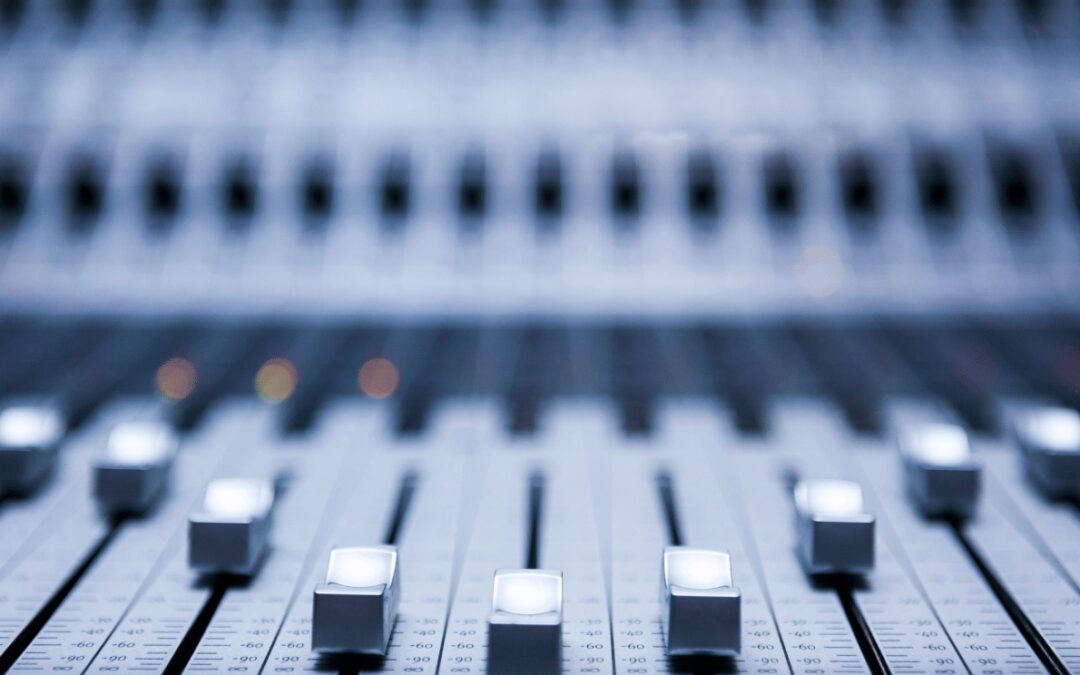Mixing music is an art form that requires skill, creativity, and a good understanding of the technical aspects of sound production. Mixing for different genres requires a different approach, as each genre has its own unique characteristics and requirements. It’s not just about making everything sound good, but also about understanding each genre and bringing out the best in every element of the mix. If you’re looking to get your music mixed, you can find out more HERE.
We sat down and had a chat about the different mixing methods that work better for each different genre, including rock, pop, hip-hop, and electronic music. Remember these are just thoughts and opinions, so of you feel very differently let us know! we’d love to hear from you.
Mixing for Rock
Rock music is known for its high-energy sound, with heavy guitars, big drums and a strong emphasis on vocals. When mixing for rock, it’s important to create a powerful and dynamic sound that captures the energy and intensity of the genre.
One of the key elements of a great rock mix is the balance between the instruments. The guitars, bass, drums, and vocals should all be audible and balanced, without any one element overpowering the others. This can be achieved by careful EQing, panning, and level adjustments.
The drums are a particularly important element of a rock mix, as they provide the backbone of the rhythm section. To achieve a powerful drum sound, it’s important to use compression and EQ to bring out the kick and snare and to add some reverb or delay to create a sense of space and depth.
When it comes to guitars, distortion is often used to create a gritty, edgy sound. However, it’s important to ensure that the distortion doesn’t overpower the rest of the mix. Again, mindful EQing can help to create space in the mix for the guitars while panning can help to create separation between the left and right channels.

Mixing for Pop
Pop music is known for its catchy hooks, infectious melodies, and polished production values. When mixing for pop, the focus is on creating a clean, polished sound that allows the vocals to shine.
One of the key elements of a great pop mix is the use of effects, such as reverb and delay, to create a sense of space and depth. However, it’s important not to overdo it, as this can make the mix sound cluttered and muddy.
Another important element of a pop mix is the use of compression to create a consistent volume level. This is particularly important for the vocals, which should be front and center in the mix. Compression can also be used to add punch to the drums and to create a sense of cohesion between the different elements of the mix.
When it comes to EQing, it’s important to create space in the mix for the vocals, while also ensuring that the bass and drums provide a solid foundation for the rhythm section. Panning can also be used to create separation between the different elements of the mix, while automation can be used to create dynamic changes in volume and effects.

Mixing for Hip-Hop
Hip-hop is a genre that relies heavily on beats and rhythms, with a focus on the vocals and the lyrics. When mixing for hip-hop, it’s important to create a powerful, bass-heavy sound that allows the vocals to cut through the mix.
One of the key elements of a great hip-hop mix is the use of compression to create a consistent volume level and to add punch to the drums and bass. EQing is also important, particularly for the bass, which should be powerful and well-defined without overpowering the rest of the mix. When it comes to the vocals, it’s important to use EQ to create space in the mix and to add some reverb or delay to create a sense of space and depth.
Mixing for Electronic Music
Electronic music is a genre that encompasses a wide range of styles, from techno and house to dubstep and trap. When mixing for electronic music, the focus is on creating a powerful, energetic sound that emphasizes the rhythms and textures.
One of the key elements of a great electronic music mix is the use of effects, such as delay, reverb, and distortion, to create a sense of space and depth. Automation is also an important tool for creating dynamic changes in volume and effects, particularly for buildups and drops.
When it comes to EQing, it’s important to create space in the mix for the bass and drums, which provide the foundation for the rhythm section. Panning can also be used to create separation between the different elements of the mix, while compression can be used to add punch to the drums and to create a consistent volume level.

Mixing requires a different approach for each genre, as each genre has its own unique characteristics and requirements. Whether you’re mixing for rock, pop, hip-hop, or electronic music, it’s important to bring out the best in every element of the mix.
By carefully balancing the instruments, using effects to create space and depth, and applying EQ, panning, compression, and automation techniques, you can achieve a great mix that captures the energy and essence of the genre.
Mixing really is both an art and a science, and there is no one-size-fits-all approach when mixing for different genres. Experimentation and creativity are key to finding the right mix for each genre, in the end, it’s better to test without fear and push the boundaries of what’s possible.
If you have more to add, get in touch! If you want music mixed get in touch or find Damiano on Fiverr OVER HERE!
Ciao, Team Mex

